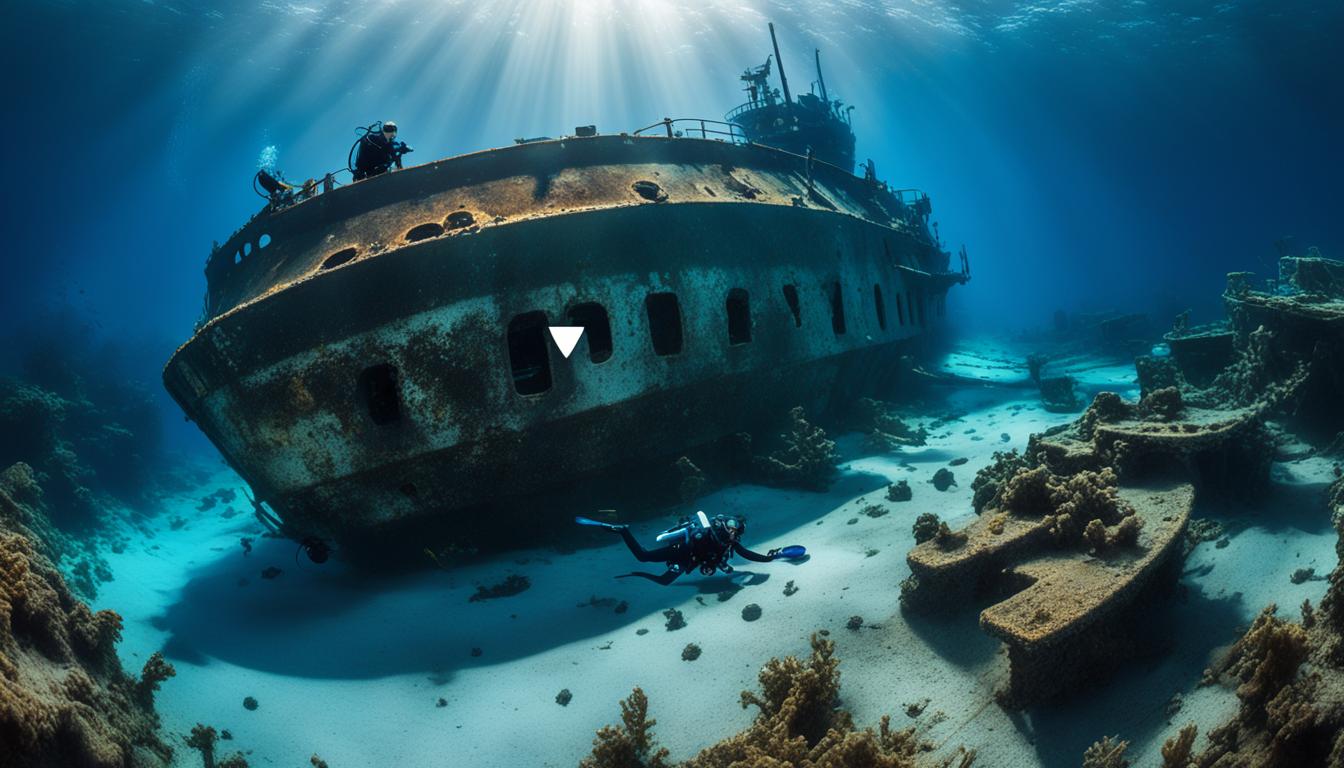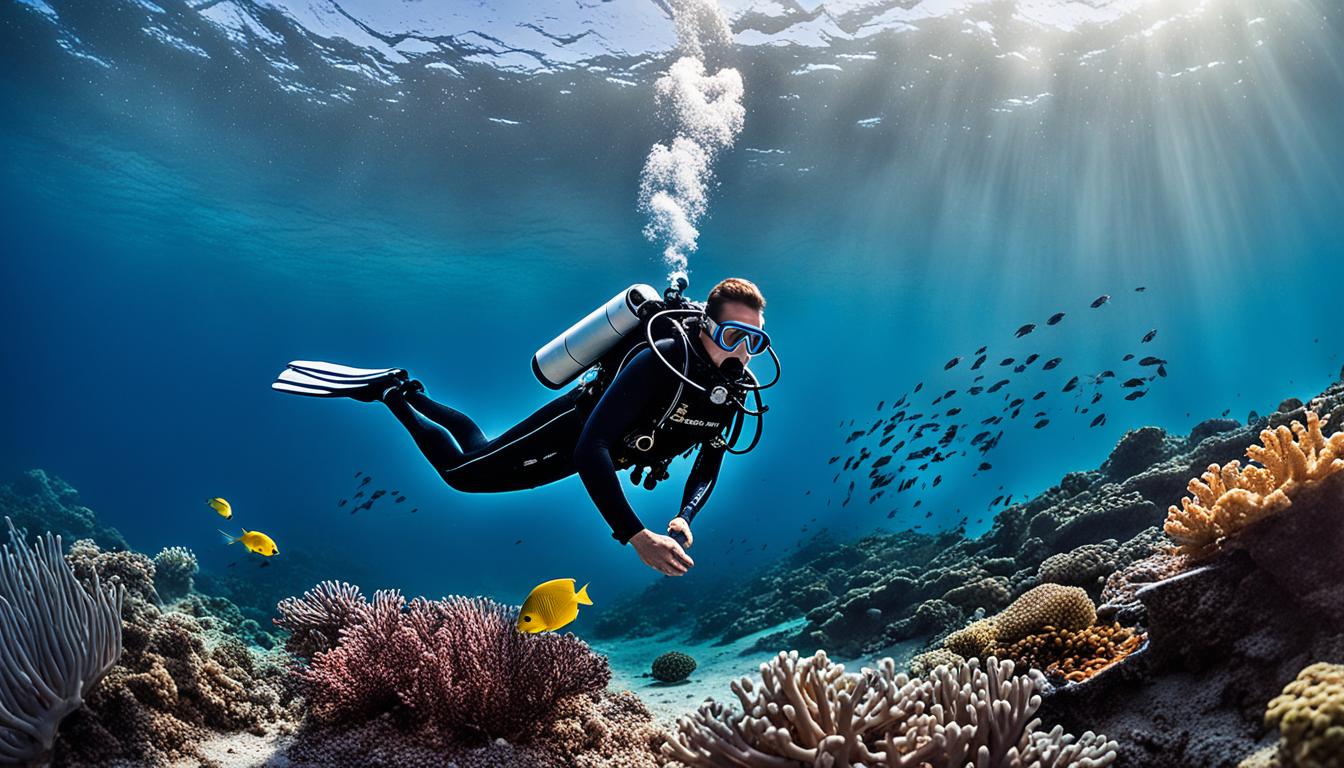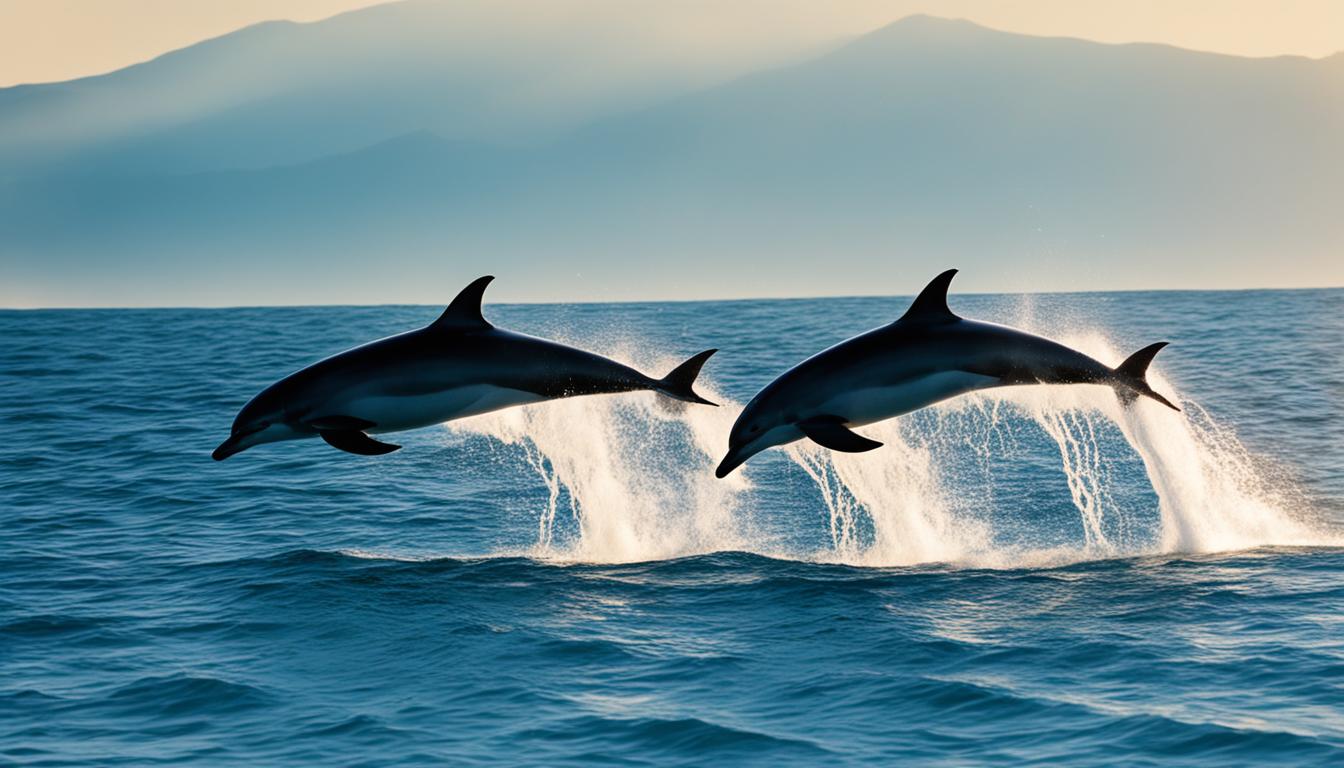Welcome to an exciting journey into the world of underwater wrecks and archaeological sites! At [Brand Name], we specialize in underwater photography, capturing the beauty, mystery, and historical significance of submerged shipwrecks and archaeological sites.
Did you know that the Naval History and Heritage Command (NHHC) Underwater Archaeology Branch (UAB) manages over 2,500 shipwrecks and 15,000 aircraft wrecks worldwide? The UAB conducts extensive research, policy development, artifact conservation, and public outreach to study and preserve these sunken military craft and contribute to the advancement of underwater archaeology.
Join us as we delve into the importance of underwater archaeology and its role in understanding our maritime history and preserving cultural heritage. Discover how underwater exploration and marine photography provide valuable insights into past civilizations, trade routes, naval warfare, and technological advancements.
Key Takeaways:
- Underwater archaeology reveals insights into past civilizations and technological advancements.
- Shipwrecks and archaeological sites are valuable cultural heritage resources.
- Photography and documentation methods aid in the study and preservation of these underwater sites.
- Government agencies and wreck diving enthusiasts play a role in managing and respecting submerged cultural resources.
- Maritime heritage provides educational opportunities to better understand our past.
The Importance of Underwater Archaeology
Underwater archaeology plays a crucial role in understanding our maritime history and preserving cultural heritage. By exploring historical sites underwater, such as shipwrecks and archaeological sites, researchers gain insights into past civilizations, trade routes, naval warfare, and technological advancements.
The field of underwater archaeology utilizes photography and other documentation methods to record and research these sites. Photographs serve as valuable visual evidence, capturing intricate details and providing a visual representation of the underwater landscape. Marine photography offers a unique perspective, allowing us to explore the hidden depths and unearth the mysteries of the past.
Through underwater exploration, researchers have discovered a wealth of historical sites that provide valuable information about our ancestors. These sites serve as time capsules, offering a glimpse into the lives of those who came before us. By studying the artifacts and structures found at these sites, we can piece together the puzzle of our history and gain a better understanding of our cultural heritage.
Exploring shipwrecks and archaeological sites underwater allows us to uncover hidden stories and examine the impact of human activity on the marine environment. It is through this exploration that we can truly appreciate the interconnectedness of our past with the present.
The preservation and study of underwater cultural resources contribute to our understanding of human history and provide educational opportunities for the public. By sharing the discoveries made through underwater archaeology, we can engage and inspire others to appreciate the value of our marine heritage.
Discovering Historical Sites through Underwater Archaeology
Underwater archaeology has led to remarkable discoveries that shed light on various aspects of our past. Here are some notable historical sites that have been explored and documented through underwater archaeology:
- The RMS Titanic: The world-famous shipwreck that offers a glimpse into the tragic events of its sinking and the lives of those onboard.
- The Great Barrier Reef Shipwrecks: A collection of numerous shipwrecks that provide insights into early trade and exploration in the region.
- The Egyptian Underwater Cities: Ancient cities such as Thonis-Heracleion and Canopus that were once thriving centers of trade and commerce.
| Historical Site | Significance |
|---|---|
| RMS Titanic | Provides insights into the technological advancements of the time and the human tragedy that unfolded. |
| Great Barrier Reef Shipwrecks | Offers a glimpse into early maritime exploration and the challenges faced by sailors navigating the treacherous reefs. |
| Egyptian Underwater Cities | Provide a unique perspective on ancient Egyptian civilization and the influence of the Nile River on their society. |
Through underwater photography and archaeological research, we continue to uncover new insights into our maritime history. These discoveries spark the imagination and fuel our curiosity for the mysteries that lie beneath the sea.
By embracing the adventure of underwater exploration and supporting the preservation of historical sites, we can ensure that future generations have the opportunity to connect with our rich maritime heritage.
Managing and Preserving Submerged Cultural Resources
When it comes to preserving and protecting our submerged cultural resources, it takes a collaborative effort from various government agencies, including the Naval History and Heritage Command, National Park Service, and state authorities. These entities have established management authorities and guidelines to ensure the safeguarding of these valuable underwater treasures.
One crucial legislation that plays a significant role in protecting abandoned shipwrecks is the Abandoned Shipwreck Act. This act grants government ownership over most abandoned shipwrecks, shielding them from salvage operations and potential destruction.
Furthermore, states and territories also take ownership and management responsibilities for submerged cultural resources within their waters. They implement a range of laws and programs aimed at safeguarding these sites for their historical, educational, and recreational value.
As wreck diving and marine archaeology enthusiasts, we have a role to play in respecting and preserving these underwater treasures. By understanding and adhering to guidelines, we can ensure that these sites remain intact for future generations to explore and learn from.
“The preservation of our submerged cultural resources is crucial in maintaining a link to our past and understanding our maritime history. Together, let us work towards protecting these sites for the benefit of all.”
| Government Agencies | Roles and Responsibilities |
|---|---|
| Naval History and Heritage Command | Manages and oversees the preservation, research, and interpretation of the U.S. Navy’s sunken military craft. |
| National Park Service | Collaborates with various organizations and agencies to protect and preserve submerged cultural resources, including shipwrecks. |
| State Authorities | Have ownership and management responsibilities for submerged cultural resources within their waters, employing laws and programs for preservation. |
Let us take a moment to appreciate the significance of these efforts in preserving our maritime heritage.

Wreck diving allows enthusiasts to explore underwater shipwrecks and contribute to their preservation.
Educational Resources in Maritime Heritage
Maritime heritage, also known as marine archaeology, encompasses the study of ancient human objects found beneath the water’s surface. Shipwrecks are the most common sites investigated, but researchers also study other submerged structures and sites.
Educational resources, such as fact sheets, essays, lessons, videos, and images, are available to learn more about maritime heritage and its significance. These resources provide insights into the field, past expeditions, and the careers involved in investigating maritime heritage. By delving into maritime heritage, we can gain a better understanding of our past and the effects of the environment on human history.
Explore the Depths of Knowledge
- Fact Sheets: Detailed information about specific maritime archaeological sites, including historical context, findings, and preservation efforts.
- Essays: Thought-provoking articles written by experts in the field, discussing various aspects of maritime archaeology and its impact on society.
- Lessons: Educational modules designed for students and enthusiasts, covering topics such as underwater excavation techniques, artifact analysis, and conservation practices.
- Videos: Engaging visual content showcasing underwater explorations, archaeological discoveries, and interviews with maritime archaeologists.
- Images: Captivating photographs capturing the beauty and historical significance of marine heritage sites, allowing us to visualize the underwater treasures.
By utilizing these educational resources, we can immerse ourselves in the fascinating world of maritime archaeology, uncovering hidden stories of the past and appreciating the importance of preserving our underwater heritage.
Unveiling the Richness of the Deep
Maritime heritage sites hold invaluable information about the cultures, trade networks, and technological achievements of our ancestors. By studying and understanding these submerged treasures, we can gain insights into our shared history and appreciate the impact of the marine environment on human civilization.
Whether you’re a student, a history enthusiast, or simply curious about our maritime past, the educational resources available in maritime heritage offer a gateway to exploration and discovery. Dive into the depths of knowledge and embark on a journey that reveals the wonders of the underwater world.
Conclusion
Exploring and photographing underwater wrecks and archaeological sites is a captivating endeavor that combines art, history, and preservation. By engaging with organizations like the Naval History and Heritage Command’s Underwater Archaeology Branch, government agencies, and educational resources, we can actively contribute to the study and protection of these submerged cultural resources.
Participating in wreck diving and underwater photography allows us to document and preserve our maritime heritage. Whether we are capturing stunning images or studying the historical significance of these sites, our contributions play a vital role in uncovering the mysteries hidden beneath the ocean’s depths.
Let us embrace the opportunity to explore and appreciate the rich history concealed within underwater wrecks and archaeological sites. Through our passion for marine archaeology and shipwreck preservation, we ensure that future generations can continue to learn from and be inspired by these fascinating remnants of the past.
FAQ
What is underwater archaeology?
Underwater archaeology is the study of submerged cultural resources, such as shipwrecks and other archaeological sites, to gain insights into past civilizations, trade routes, naval warfare, and technological advancements.
How do researchers document underwater sites?
Researchers document underwater sites through methods like photography and other documentation techniques, capturing images and data to study and preserve these historical sites.
Who manages and protects submerged cultural resources?
Government agencies, such as the Naval History and Heritage Command, National Park Service, and state authorities, have management authorities and guidelines in place to preserve and protect submerged cultural resources.
What laws protect abandoned shipwrecks?
The Abandoned Shipwreck Act establishes government ownership over most abandoned shipwrecks, safeguarding them from salvage and ensuring their preservation.
How can individuals contribute to preserving underwater sites?
Individuals can contribute to preserving underwater sites by respecting guidelines, laws, and regulations surrounding wreck diving and marine archaeology and by participating in underwater photography to document and raise awareness about these historical sites.
How can Underwater Photography Expeditions Be Combined with Exploring Underwater Wrecks and Archaeology?
When considering underwater photography expedition planning, combining it with exploring underwater wrecks and archaeology can provide a unique and captivating experience. This combination allows for capturing stunning images of historical artifacts and submerged structures, creating a visual narrative of the underwater world’s hidden treasures.




